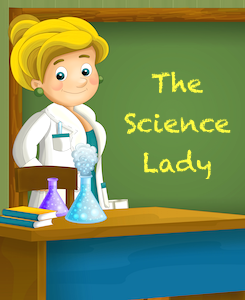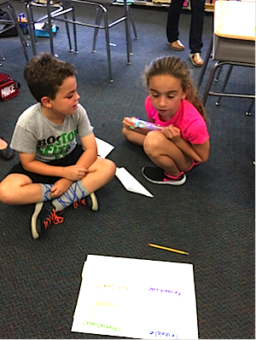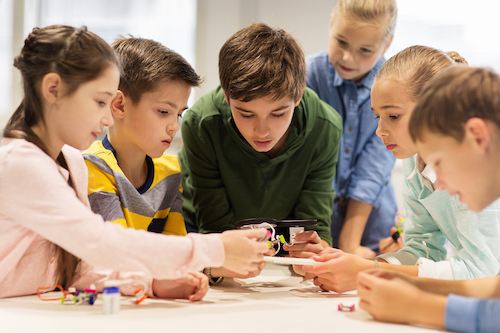Hands-On Science in Real World Classrooms
 “Put me in coach,
“Put me in coach,
I’m ready to play, today.
Put me in coach,
I’m ready to play, today.
Look at me, I can be, centerfield.”
So sings the amazing voice of John Fogerty in his video tribute to baseball.
Substitute the word teach for play and you have my attitude at the beginning of this school year. I was sooo sure I was ready to play. And I found that I mostly was — but things didn’t go quite as seamlessly as I expected.
The last two months, as I began a new job in a new state, have provided me with many different science opportunities and lots of fodder for this blog.
One of the opportunities was being asked to substitute in a 4th grade science class and continue to work as a science coach at the same time. What more could I ask? I was teaching one of my favorite grades and one of my favorite core disciplinary topics – Energy!
My version of spring training
One of the first things I did was to refresh my understanding of the concepts associated with energy. In my day job as a coach, I had the luxury of doing that because I wasn’t teaching students before and after my science class (more on “luxury” further down).
Energy is one of those big science ideas that I am learning more about all the time. I keep going back to the Framework of Science Education. Having been a true believer in transforming or “converting” energy, I am trying to wrap my head around this paragraph from the Framework:
“The idea that there are different forms of energy, such as thermal energy, mechanical energy, and chemical energy, is misleading, as it implies that the nature of the energy in each of these manifestations is distinct when in fact they all are ultimately, at the atomic scale, some mixture of kinetic energy, stored energy, and radiation. It is likewise misleading to call sound or light a form of energy; they are phenomena that, among their other properties, transfer energy from place to place and between objects.“ (p. 122)

I was wondering if they would make connections between the lessons this week and their previous experience. I had lots of wonderings. And then…
Teaching in the real world
Spending a week teaching classroom science, following a curriculum, making sure I was confident with concepts, and trying to keep up the pacing of the lesson felt very stressful to me. So many moving parts. All of a sudden, a conversation I had previously with a teacher (in my coach role) about making science richer in the classroom made complete sense.
She said there wasn’t time to teach the science the way she would like. In that moment, as a coach, I found her comment somewhat troubling. What does she mean? Of course there is time!
But later, when I was walking in her shoes, I felt the same pressures she was describing. In the current schedule, there really isn’t enough time to do things like intersperse the reading aloud of a picture book that has strong connections to the science concept we are teaching. As a coach, I knew I should make sure there was time for a “science talk” at the end of each day’s work, but as a teacher I was struggling to make it happen.
Spending a week teaching 4-PS3-2 — helping students make observations that they could use as evidence that energy can transfer from place to place using electric current to generate sound and light — was eye-opening and definitely time consuming.
Everything took longer than planned and there was no room for anything else in the 40 or 45 or rare 60 minute sessions. If I decided to veer away from the curricular path or pacing guide, I was also affecting other classes and lessons down the road.
I discovered that although my coach self thinks lesson closure with a making-meaning science talk is critical, I was sometimes unable to pull it off as the 4th grade teacher.
So what does this all mean?
One thing it means is that, as coaches, we need to listen very carefully to the teachers we work with and understand the limits and boundaries of their days. We need to be able to figure out how to coach 3-dimensional instruction within their constraints. How can we help them get their students engaged in the important practices.
As a teacher I wanted another set of hands, ears and eyes as students were exploring. I would have loved to have someone taking pics and videos, jotting down what they heard students saying, so we could talk about all that together after the lesson. And this brings up another reality: most elementary teachers don’t have the daily structure for much collegial conversation.
What can we do?
As a coach:
- I can find and share resources in a timely manner that make sense for the teachers with whom I am working. Resources that require the least amount of time to get the most accomplished.
- I can drop by class just to check in even when there is no scheduled co-teaching.
- I can be transparent about what I am doing when I am co-teaching.
- I can invite leadership and teachers to observe me when I model teach and follow up with discussion that includes the time factors.
- I can help leadership understand the teaching constraints as we try to up our STEM game.
As a teacher
- I can email the coach and look for suggestions of how I might integrate science literacy without using my “literacy block.”
- I can reach out and ask the coach to just be there during a lesson as a second set of hands, ears and eyes, capturing some of the learning moments for later sharing.
- I can ask a coach to co-plan and co-teach with me.
Teachers are smack at the center of our school game. And it’s tough playing centerfield. As coaches, our expectations are high, for the kids and for ourselves as educators, but let’s not forget what it’s like to be out there on the field.



































Really powerful, Kathy! I look forward to reading more. I love how you end with action steps from more than one perspective.
Thanks so much Valerie. I learned so much from you and Mark. I would like
to have an opportunity to work with you again.
Well done, Kathy!